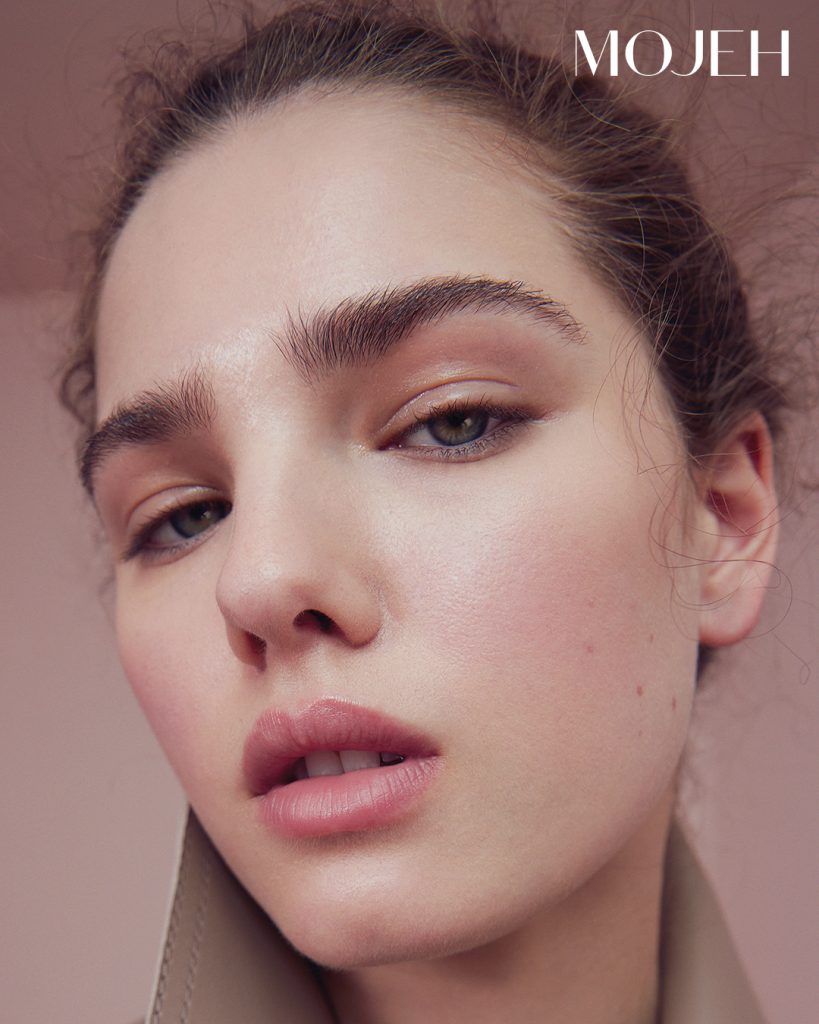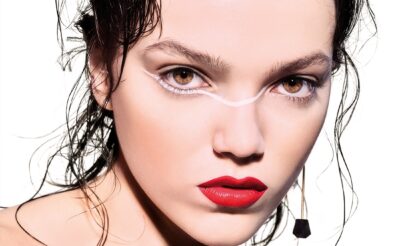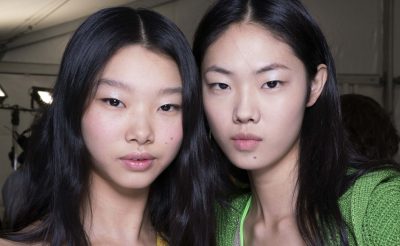As the era of unrealistic body goals starts its slowdown and celebrities continue to vocalise regrets, plastic surgeons are seeing an increasing trend for plastic surgery reversals. But can your procedure be reversed and what are the stakes?
From Botox to fillers, ‘How long does it last?’ is a top Google search for nearly every aesthetic procedure. Unlike injectables, however, plastic surgery is revered for its relative permanence, coming complete with enhanced durability, a higher price and, unfortunately, greater stakes. So what happens when you regret going under the knife? For starters, you wouldn’t be alone. Celebrities like Chrissy Teigen and Victoria Beckham have been vocal about having their breast implants removed, as have many others for a variety of reasons such as complications caused by the implants, or the desire to downsize; reality television personality Blac Chyna completely removed her facial fillers and implants in both her breasts and buttocks as she enters a new chapter of life. Elsewhere everyone from Courtney Cox to Kylie Jenner has been jumping on the bandwagon by having their facial fillers removed, while Bella Hadid has spoken openly about regretting the nose job she had at 14. Perhaps what seemed sexy at 25 feels unsophisticated at 45, or that buzzy celebrity-inspired trend just didn’t hit the mark in real life. But just like that, we have an increasing pursuit of a more natural-looking body.
Not to be confused with plastic surgery revision, which refers to a secondary procedure that is performed to enhance or modify the results of a previous plastic surgery, which may be necessary incases where the initial results didn’t meet the patient’s expectations or where the patient desires further enhancements, plastic surgery reversal is the process of undoing the results of a previous plastic surgery completely. “I’ve seen many patients looking to reverse their plastic surgery,”Dr Tarek Bayazid, specialist plastic surgeon at Dubai’s BodySmart Poly Clinic tells MOJEH. “The most common causes include dissatisfaction with the results, complications arising from the surgery, or changes in personal preferences. Some patients may find that their new appearance doesn’t meet their expectations, while others may experience physical discomfort or pain from the procedure.” Dr Omar Tillo, plastic surgeon and senior medical director at London’s Creo Clinic agrees, having seen a number of patients urn to him for help after receiving unsatisfactory results elsewhere: “Sometimes the results just don’t meet the patient’s expectations. This could be due to anything from poor communication with the surgeon to unrealistic expectations or unexpected changes in the healing process. In such cases, the patient may opt for a reversal in an attempt to restore their appearance to its pre-surgery state.”

Photographed by Andrew Yee for MOJEH 107
So what are women currently having reversed, and what are they not? “Breast augmentation with implants is the most commonly reversed plastic surgery procedure,” explains Dr Tillo. “This is mainly due to complications such as capsular contracture, implant rupture, dissatisfaction with the appearance of the implants or, most commonly, for personal reasons due to changes in lifestyle and health beliefs.” Luckily, along with the likes of dermal fillers, removing breast implants is a relatively simple procedure. It’s important to recognise, however, that backtracking other types of surgery is rarely seamless, with cosmetic interventions almost always rendering your anatomy forever changed. “Procedures such as facelifts or rhinoplasties may require extensive surgical revision, or may not be reversible at all,” adds Dr Tillo. “The same goes for anything else that incurs changes in the bone or muscle structure such as jawline contouring or chin augmentation, while some dermal fillers such as silicone and hydrogel can’t be easily removed. Then there’s unexpected scarring as a result from surgery, which is often permanent.”
Have you decided to take the plunge and are wondering what happens next? The first step requires a consultation to discuss your concerns and goals, and you’ll also need to undergo a medical evaluation to ensure you’re healthy enough to proceed. As for the surgery itself, in some cases the surgeon may simply be able to remove or adjust the implants or tissue that was added during the initial surgery, while in other cases the affected area would need to be reconstructed or reshaped. “Sometimes I may recommend additional procedures to achieve the desired outcome,” adds Dr Bayazid. “For example I may recommend a breast lift to improve the appearance of the breasts after the implants are removed.” As with all surgeries, downtime depends on the type of procedure and extent of the revision: “Removing breast implants may need a few days of rest, while revision of a facelift or a tummy tuck may require several weeks of downtime,” says Dr Tillo.
Managing your expectations is vital for plastic surgery reversal as, like it or not, your features are unlikely to return their pre-surgery state. If the reversal includes removing implants or fat deposits, it can lead to changes in the shape of the area. “The degree to which the body can be restored to its pre-surgical state will depend on factors including the type and extent of the original procedure, the amount of time since the original surgery, and the patient’s individual circumstances,” explains Dr Tillo. “However most often plastic surgery reversals won’t result in the patient’s body looking exactly the same as it did before the original surgery.”

Photographed by Tony Tran for MOJEH 96
From motivation and timing to risks, complications, recovery times and post-operative care, there’s a mountain of questions to ask yourself before considering any form of plastic surgery reversal. For those looking for a less intrusive way to tone down the results, it’s also worth considering making an appointment with a non-surgical aesthetics expert to see if there’s anything they can do to help.
“I have lots of clients coming through my doors who are unhappy with their results from plastic surgery,” Dr Rita Rakus tells MOJEH. “With the dramatic increase in technological advances in energy-based devices for the face and body, patients are also now seeking more non-intrusive natural and preventative treatments at an early age.” In some cases, for example, patients may have their overfilled faces dissolved and then boosted with energy-based, painless devices with no downtime to achieve a more natural look in the lips and cheeks. Other new devices Dr Rakus specialises in that can help turn back the clock include Emsculpt Neo, which treats 10 parts of the body and reduces fat by 34 per cent, in many cases reducing the need for further liposuction, and fast-acting ultrasound machine Softwave, which helps tighten the face and body with zero downtime.
Experts predict that surgeons will likely see reversal requests skyrocket, especially with 2024 looking set to be the year the pendulum swings back to a more natural aesthetic. The proof is in the pudding when it comes to the decline in once-popular surgeries such as the Brazilian Butt Lift, which aims to create fuller buttocks through fat transfer into the gluteal muscle. At one time the procedure had the fastest growing uptake in the world compared to any other surgery — a scary stat given it’s one of the most dangerous and deadly, with risks including blood clots, cardiac complications and fat embolism, where the fat transferred to the buttocks moves into the bloodstream causing a blockage of the lungs. “The traditional BBL gained popularity and became a trend approximately five to seven years ago, but requests have significantly slowed down,” Dr Tillo tells us. “Not only is there an increase in the awareness of risks associated with the procedure, but also due to shifting beauty standards. We are no longer seeing an obsession with an exaggeratedly large buttocks, wide hips, or an extremely narrow waist. Instead, there is a growing emphasis on achieving amore sculpted, lifted and well-defined silhouette without necessarily pursuing excessive size. This trend aligns with the concept of beauty as defined and appreciated by artists throughout history.”
While certain bodies, and by extension plastic surgeries, will always weave in and out of fashion over time, it’s quickly becoming clear that today’s woman is taking a more considered approach to her body — and this is only a positive thing. “Attitudes towards plastic surgery and natural beauty do vary wildly depending on the individual and cultural context, however there does seem to be a growing trend towards embracing natural beauty and diversity, which is a healthy attitude,” enthuses Dr Tillo. “These days, the vast majority of my patients seek plastic surgery to address specific issues in their body that are affecting their quality of life, confidence, clothing or activities, and often ask for natural adjustments, fine tuning or enhancements that can harmonise the shape of their body into naturally aesthetic proportions.”
No-one is denying that cosmetic surgery will always be empowering and, for many, a boost to their self-esteem. But, as aesthetics change and extreme trends get left behind, the face of the future looks set to be very different indeed.
Read Next: How To Achieve A Flawless Fake Tan This Winter, According To Experts



